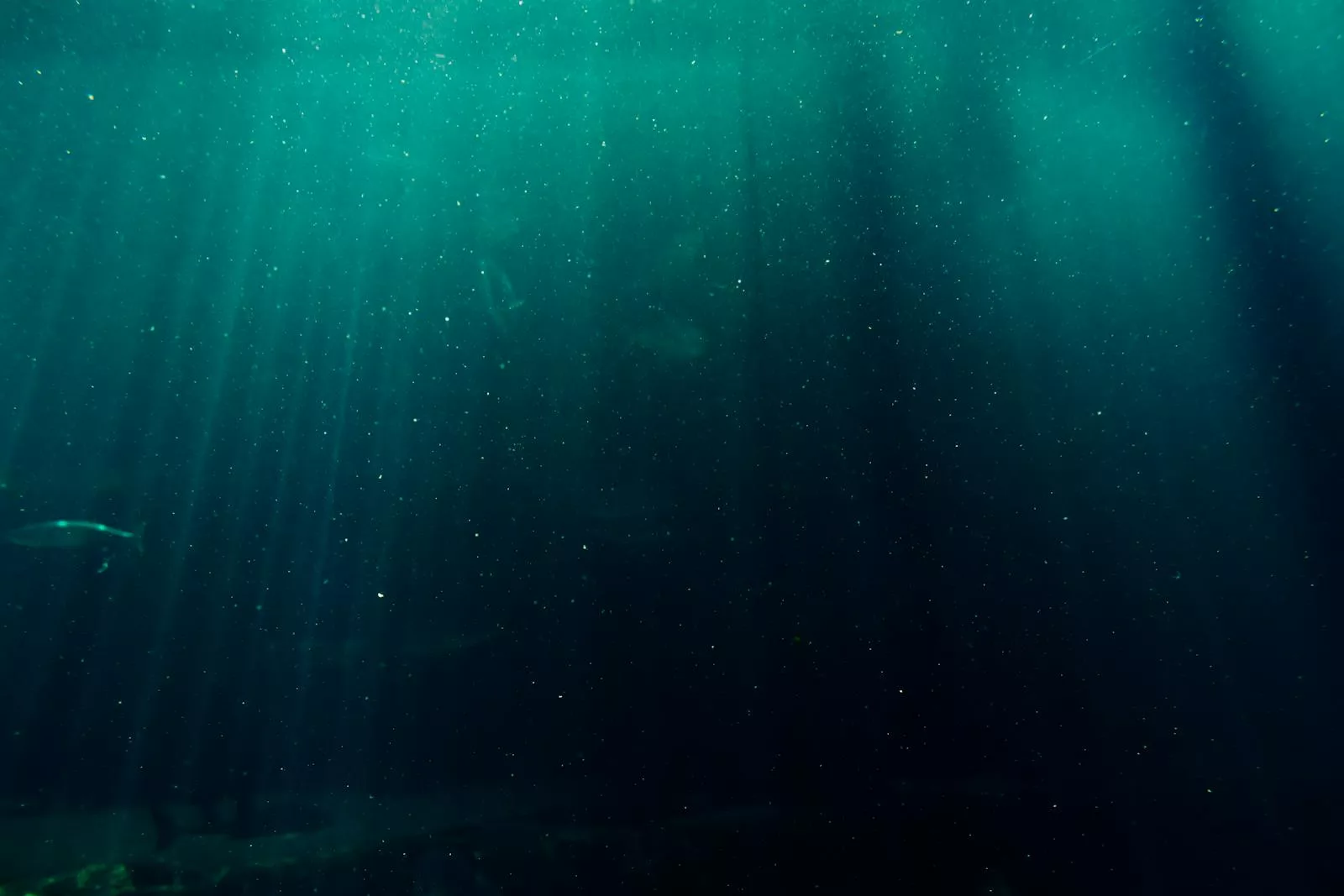The deep ocean is one of the most mysterious and least explored regions of our planet. Covering over 70% of Earth’s surface, the ocean holds secrets that continue to astonish scientists and researchers. With extreme pressures, complete darkness, and bizarre life forms, the deep sea is a world unlike any other. Despite advancements in technology, the vast majority of the deep ocean remains unexplored, meaning there are likely countless discoveries yet to be made. From underwater mountains taller than Everest to creatures that defy biological expectations, the deep sea is a place that constantly challenges our perception of reality. Here are 16 shocking facts about the deep ocean that will leave you in awe.
1. The Deep Ocean Is the Largest Habitat on Earth
The deep ocean, defined as depths below 200 meters (656 feet), makes up over 95% of Earth’s habitable space. Despite its vast size, we have explored less than 5% of it, leaving an immense amount of unknown territory. The deep sea is teeming with life, but due to its remoteness and the difficulty of studying such extreme environments, much of its biodiversity remains hidden. Scientists estimate that millions of undiscovered species may live in the deep sea, waiting to be found. Each expedition to these uncharted waters unveils new organisms, many of which possess strange and fascinating adaptations unlike anything seen in terrestrial life forms.
2. More People Have Been to the Moon Than the Deepest Parts of the Ocean
Only a handful of people have ventured to the Challenger Deep, the deepest point in the Mariana Trench at nearly 11,000 meters (36,000 feet). In contrast, over a dozen astronauts have set foot on the Moon. Deep-sea exploration remains an enormous challenge due to the crushing pressures, extreme temperatures, and technical limitations of underwater vehicles. The depths of the ocean are so inhospitable that even the most advanced robotic submersibles struggle to withstand the immense pressure. The challenge of exploring the deep sea is comparable to space exploration, requiring specialized technology and innovative engineering to push the boundaries of human knowledge.
3. The Pressure Would Crush a Human Instantly
At the deepest parts of the ocean, the pressure is over 1,000 times greater than at sea level. This immense force would crush a human body instantly without the protection of a specialized submersible. Even most submarines cannot withstand these pressures, requiring specially designed deep-sea vessels reinforced with titanium and thick hulls. The intense pressure at these depths affects not only living organisms but also the way gases and liquids behave. Water molecules become compressed, and even metals used in submersible construction must be engineered to withstand these extreme forces. Scientists study the adaptations of deep-sea creatures to understand how they survive under such conditions, providing insights into materials science and bioengineering.
4. There’s an Entire Ocean Below the Ocean
Scientists have discovered massive reservoirs of water trapped beneath the seafloor. Some of these hidden oceans contain more water than all of Earth’s surface oceans combined. These underground reservoirs could play a role in regulating the planet’s water cycle and may even support unknown microbial life. The discovery of vast subsurface water deposits challenges conventional understanding of Earth’s geology and hydrology. Some of these buried oceans exist within Earth’s mantle, locked in mineral formations that slowly release water over geological timescales. If similar water reserves exist on other planets, they could provide crucial environments for extraterrestrial life to develop.
5. The Deep Sea Is Home to the Largest Waterfall on Earth
The Denmark Strait cataract, located between Greenland and Iceland, is the world’s largest underwater waterfall. It drops nearly 3,500 meters (11,500 feet), dwarfing any land-based waterfall. This powerful underwater cascade plays a crucial role in regulating ocean currents and global climate patterns. Unlike waterfalls on land, which rely on gravity pulling water downward, deep-sea waterfalls form due to differences in water temperature and salinity. The Denmark Strait cataract moves colossal amounts of water, helping to drive the thermohaline circulation, the global system of ocean currents that distributes heat around the planet. Without these underwater waterfalls, Earth’s climate would be drastically different, demonstrating how interconnected oceanic and atmospheric systems truly are.
6. Life Exists in Complete Darkness
The deep ocean receives no sunlight, yet countless organisms thrive in total darkness. Many have developed unique adaptations such as bioluminescence to survive in this alien-like environment. Others rely on hydrothermal vents, where superheated mineral-rich water provides the energy needed to sustain entire ecosystems. The discovery of deep-sea vent ecosystems in the 1970s revolutionized biology, proving that life can exist without sunlight. Instead of relying on photosynthesis, these ecosystems depend on chemosynthesis, where bacteria use chemical reactions to generate energy. This discovery suggests that similar life forms could exist on icy moons like Europa, where hydrothermal activity may provide the conditions necessary for alien ecosystems.
7. Bioluminescence Lights Up the Deep
Up to 90% of deep-sea creatures produce their own light through bioluminescence. This adaptation is used for communication, attracting prey, and evading predators in the dark abyss. Some species, such as the anglerfish, use glowing lures to deceive their prey, while others flash bright signals to startle attackers. Bioluminescence is one of the most mesmerizing phenomena of the deep sea, with creatures like the lanternfish and comb jellies emitting eerie blue and green glows. Some animals even produce red or infrared light, wavelengths invisible to most deep-sea predators, allowing them to communicate without being detected.
8. Gigantic Creatures Lurk in the Depths
From giant squid measuring over 40 feet long to colossal isopods the size of basketballs, the deep sea is home to some of the largest and most bizarre creatures on the planet. Some deep-sea fish have adapted by growing disproportionately large mouths and expandable stomachs, allowing them to consume prey much bigger than themselves. The gigantism observed in some deep-sea species, known as deep-sea gigantism, is thought to be an evolutionary response to scarce food resources. By growing larger, these creatures may be able to store energy more efficiently, making them better suited to surviving in environments where food is scarce and difficult to find.
9. The Deep Ocean Is a Graveyard
Whale carcasses that sink to the ocean floor create entire ecosystems, supporting deep-sea scavengers and microbes for decades. These “whale falls” provide an essential food source for creatures like hagfish, giant isopods, and unique bacteria that break down the bones. Some species rely entirely on these sporadic feasts, highlighting the extreme scarcity of food in the deep sea. Over time, whale bones become encrusted with specialized organisms, including Osedax worms, which drill into the bones and extract nutrients using symbiotic bacteria. This process demonstrates how life in the deep ocean has adapted to take full advantage of rare food sources, allowing unique ecosystems to thrive in one of the most extreme environments on Earth.
10. The Ocean Is Filled with Hidden Mountains
Beneath the waves lies an unseen world of towering mountain ranges and deep valleys. The Mid-Atlantic Ridge, the longest mountain range on Earth, stretches over 40,000 miles along the ocean floor, yet much of it remains unmapped. Some underwater mountains, or seamounts, rise thousands of meters above the seafloor, yet their peaks never break the surface. These submerged peaks provide essential habitats for deep-sea creatures, supporting coral reefs, fish populations, and invertebrates that rely on the nutrient-rich waters surrounding them. Many deep-sea mountains have yet to be explored, and scientists believe they may harbor countless undiscovered species and unique geological formations that could reshape our understanding of Earth’s past and present.
11. Alien Life May Resemble Deep-Sea Creatures
Many scientists believe that if extraterrestrial life exists in the solar system, it may look similar to deep-sea organisms that thrive under extreme conditions. The deep ocean is home to creatures that can survive in complete darkness, withstand immense pressure, and live without oxygen, making them prime analogs for life that could exist on ice-covered moons like Europa or Enceladus. The discovery of hydrothermal vent ecosystems on Earth, which operate independently of sunlight, has strengthened the idea that similar environments might support microbial or even complex life in the vast oceans hidden beneath the icy crusts of distant worlds.
12. Deep-Sea Volcanoes Are More Active Than Land Volcanoes
Beneath the ocean’s surface, thousands of active volcanoes continuously erupt, shaping the seafloor and releasing massive amounts of heat and minerals into the water. Hydrothermal vents, often found near mid-ocean ridges, support unique ecosystems that rely on chemosynthesis instead of photosynthesis. Unlike terrestrial volcanoes, which can be observed and monitored relatively easily, deep-sea volcanoes are largely hidden from view, making their study challenging. These underwater eruptions not only play a critical role in Earth’s geology but also provide insights into the extreme environments where life can thrive in the absence of sunlight.
13. The Deep Ocean Holds More Gold Than All Land Deposits
Scientists estimate that there are millions of tons of gold dissolved in seawater, along with other precious metals like platinum and silver. However, extracting these valuable elements remains an immense technological challenge. Additionally, mineral-rich hydrothermal vents deposit ores on the ocean floor, leading to discussions about deep-sea mining. While this presents economic opportunities, it also raises concerns about the potential destruction of fragile deep-sea ecosystems that have taken thousands of years to develop. The ethical implications of disturbing these pristine environments are a major topic of debate among scientists, policymakers, and environmentalists.
14. Sound Travels Faster in the Deep Ocean
Due to the immense pressure and density of water at great depths, sound waves move over four times faster in the deep ocean than in air. This phenomenon, known as the SOFAR (Sound Fixing and Ranging) channel, allows sound to travel vast distances with minimal loss of energy. Whales and other marine creatures take advantage of this natural sound highway to communicate across hundreds, if not thousands, of miles. Submarines and naval forces have also used the SOFAR channel for underwater navigation and communication, demonstrating the remarkable acoustic properties of the deep sea.
15. There Are Lakes and Rivers Beneath the Ocean
In some areas of the deep sea, dense brine pools and underwater rivers flow along the ocean floor, creating the illusion of lakes and streams existing beneath the sea. These bodies of water form when highly saline water, which is denser than regular seawater, settles into depressions on the ocean floor. Often containing toxic concentrations of hydrogen sulfide and methane, these eerie underwater lakes are inhospitable to most marine life. However, specialized organisms, including bacteria and deep-sea mussels, have adapted to survive in these extreme conditions, providing valuable insight into life’s ability to persist in hostile environments.
16. The Deep Ocean Plays a Crucial Role in Regulating Earth’s Climate
The deep ocean acts as one of Earth’s largest carbon sinks, absorbing vast amounts of carbon dioxide from the atmosphere. This process helps regulate global temperatures and mitigate the effects of climate change. Deep ocean currents, driven by temperature and salinity differences, distribute heat around the planet, influencing weather patterns and maintaining climate stability. Understanding the role of the deep sea in carbon cycling is crucial for predicting and managing the long-term impacts of human-induced climate change. However, as ocean temperatures rise and acidification increases, the ability of deep-sea ecosystems to continue absorbing carbon may be threatened, with potentially drastic consequences for global climate systems.
Conclusion
The deep ocean remains one of the most enigmatic frontiers of our planet. With each new discovery, we gain a greater appreciation for the complexities and wonders hidden beneath the waves. As exploration technology advances, who knows what other shocking secrets the deep ocean will reveal? From its unseen mountain ranges to its alien-like inhabitants, the deep sea challenges our understanding of life, science, and even the potential for extraterrestrial existence. It is a vast and largely unexplored world—one that continues to inspire curiosity and scientific exploration. As scientists push deeper into the abyss, they uncover extraordinary life forms, geological phenomena, and even potential medical breakthroughs, proving that the deep ocean is a treasure trove of knowledge waiting to be explored.




